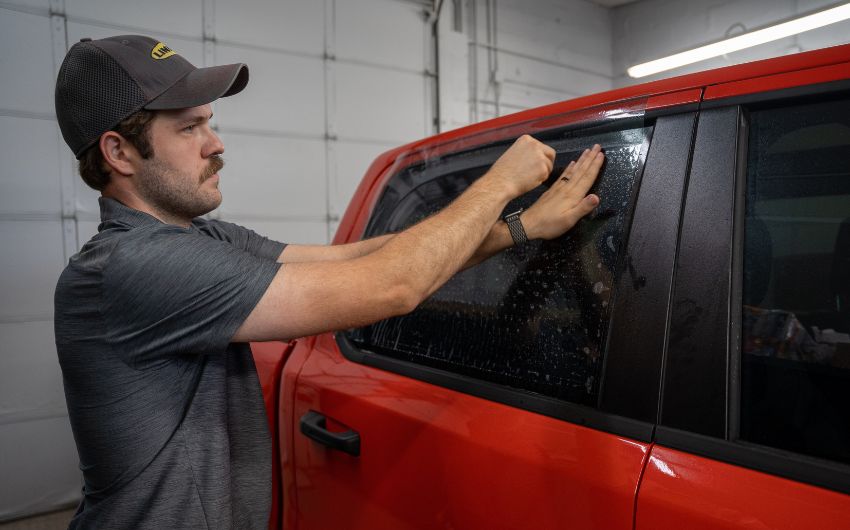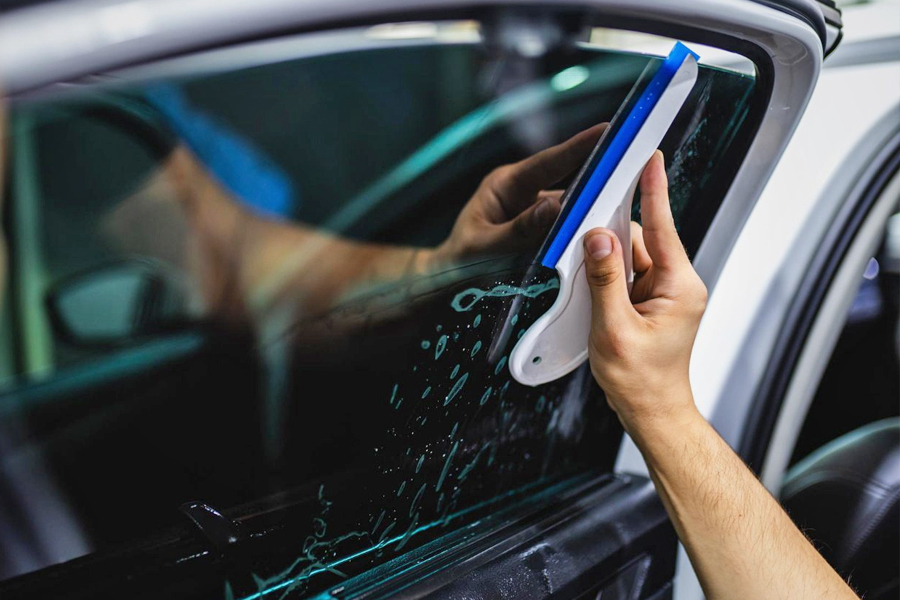How Car Window Tinting Can Boost the Resale Worth of Your Automobile
How Car Window Tinting Can Boost the Resale Worth of Your Automobile
Blog Article
Home Window Tinting Laws and Guidelines: What You Need to Know Prior To Tinting Your Cars And Truck
Prior to continuing with home window tinting for your automobile, it is necessary to acquaint on your own with the diverse legislations and guidelines that regulate this technique throughout various states. These regulations dictate the permitted levels of color darkness, often gauged by visible light transmission (VLT) percents, and include details specifications for front windscreens targeted at making certain roadway security. Furthermore, particular territories might supply medical exemptions for individuals with certifying problems. Comprehending these complexities can save you from possible legal implications, yet what are the certain regulations in your state?
Summary of Home Window Tinting Regulations
Home window tinting laws are often subject to variant throughout various jurisdictions, mirroring neighborhood guidelines and security considerations. These regulations dictate the permitted levels of tint darkness and reflectiveness on lorry home windows, making certain that chauffeurs keep sufficient exposure while additionally safeguarding versus hazardous UV rays and warmth.
Many laws categorize window tinting based on the Visible Light Transmission (VLT) percent, which shows the amount of light that can travel through the window. Usually, reduced VLT percents indicate darker colors. Legislations commonly differentiate in between the front, side, and rear home windows, with stricter limitations used to the front windshield to enhance security for both the vehicle driver and various other road individuals.
Conformity with home window tinting policies is important, as offenses can result in penalties, mandatory removal of the color, and potential rises in insurance coverage costs. It is essential for lorry owners to familiarize themselves with neighborhood laws prior to proceeding with home window tinting setups.
State-by-State Color Rules
Comprehending the details window tinting laws in each state is vital for automobile proprietors looking for to follow the law. Each state in the united state has actually established its very own collection of guidelines governing home window tinting, which can differ significantly. These guidelines typically dictate the permitted levels of tint darkness, the kinds of home windows that can be tinted, and any type of medical exemptions that might apply.
As an example, states like California have strict constraints on color darkness for front home windows, while others, such as New Mexico, might permit darker tints. In addition, specific states mandate certain exposure percents for different home windows, consisting of the windscreen, front side windows, and rear windows. It is critical for automobile proprietors to familiarize themselves with their state's laws to prevent prospective penalties or penalties.
Moreover, some states might require a qualification sticker to be positioned on tinted windows, showing conformity with state legislations. Failure to stick to these laws not only risks legal consequences but can also influence security and presence while driving. Automobile owners should perform extensive research study or get in touch with local authorities to ensure full understanding and conformity with state-by-state tint guidelines.
Allowed Color Levels and Kinds
Several lorry owners may be shocked to learn that allowed tint degrees and kinds differ extensively across different states. Each state has developed its own policies relating to the acceptable darkness and reflectivity of window color, frequently gauged by Visible Light Transmission (VLT) percents. VLT refers to the quantity of light that can go through the tinted windows; thus, a reduced portion suggests a darker color.

Moreover, the sorts of tint products allowed can vary, with some states prohibiting metallic or mirror-like coatings. It is vital for vehicle proprietors to acquaint themselves with their state's specific laws to ensure conformity. Non-compliance can result in fines, compulsory removal of the color, or various other legal consequences, making it important to recognize these policies prior to waging setup.
Medical Exceptions for Tinting
While not all states provide allocations for clinical exceptions relating to window tinting, those that do recognize the need for certain people to enhance presence and convenience because of medical problems. Various medical conditions, such as lupus, skin cancer, and particular eye problems, can make individuals especially delicate to sunshine. These individuals may need darker tints to protect themselves from unsafe UV rays and glow.

It is necessary to note that despite having a medical exception, there might still be constraints on the degree of color enabled. Compliance with state laws guarantees that individuals are both safeguarded and within lawful limitations. Those thinking about clinical exemptions need to contact their neighborhood Department of Electric motor Automobiles or comparable authority to recognize the treatments and needs needed to apply for here are the findings an exception effectively.
Penalties for Non-Compliance
Failing to follow home window tinting laws can bring about significant penalties, which differ by state. Law enforcement agencies are encouraged to issue citations for lorries that do not comply with the defined tinting policies. These penalties generally consist of penalties, which can range from modest amounts to several hundred dollars, relying on the severity of the violation and the state concerned.
In some territories, repeated offenses might lead to escalating penalties or extra fines, such as mandatory court appearances. Non-compliance might demand the elimination of unlawful tinting, frequently at the owner's expenditure. In severe cases, regular wrongdoers may deal with suspension of their car registration till conformity is achieved.
In addition, insurance coverage ramifications may occur from getting numerous citations for window color violations. Insurance companies might check out such violations as an indicator of riskier actions, potentially bring about enhanced costs or trouble in protection.
To avoid these penalties, it is important for car proprietors to familiarize themselves with their regional home window tinting laws and make sure that their lorry complies (Window Tinting). This aggressive method not just prevents legal ramifications however also promotes road safety and security
Final Thought

Most regulations categorize home window tinting based on the Visible Light Transmission (VLT) percentage, which suggests the quantity of light that can pass via the window. Compliance with window tinting policies is important, as infractions can result in penalties, obligatory removal of the tint, and possible boosts in insurance costs.Understanding the certain home window tinting policies in each state is vital for vehicle proprietors looking for to abide with the legislation. These regulations frequently determine the allowed degrees of tint darkness, the kinds of windows that can be tinted, and any clinical exemptions that might apply.
For instance, states like California have rigid restrictions on tint darkness for front windows, while others, such as New Mexico, might permit darker tints.
Report this page